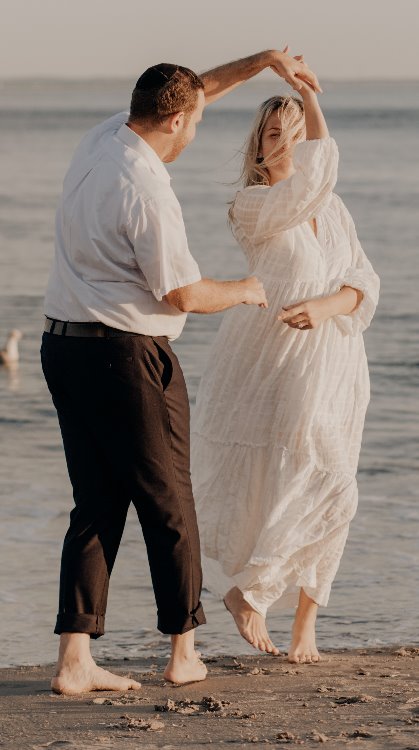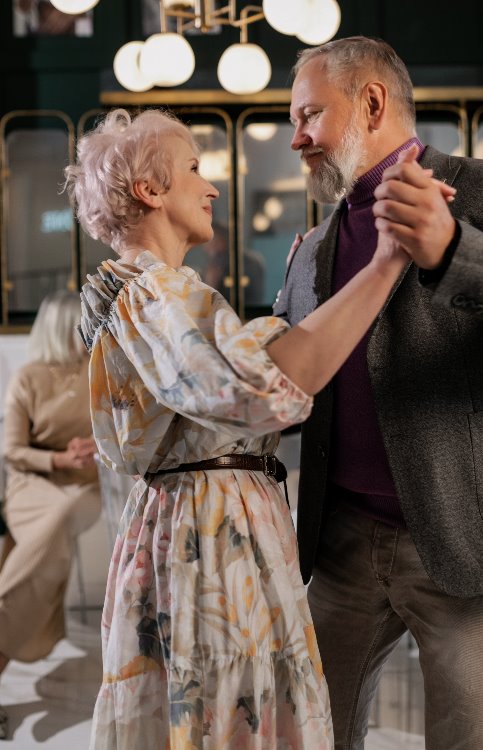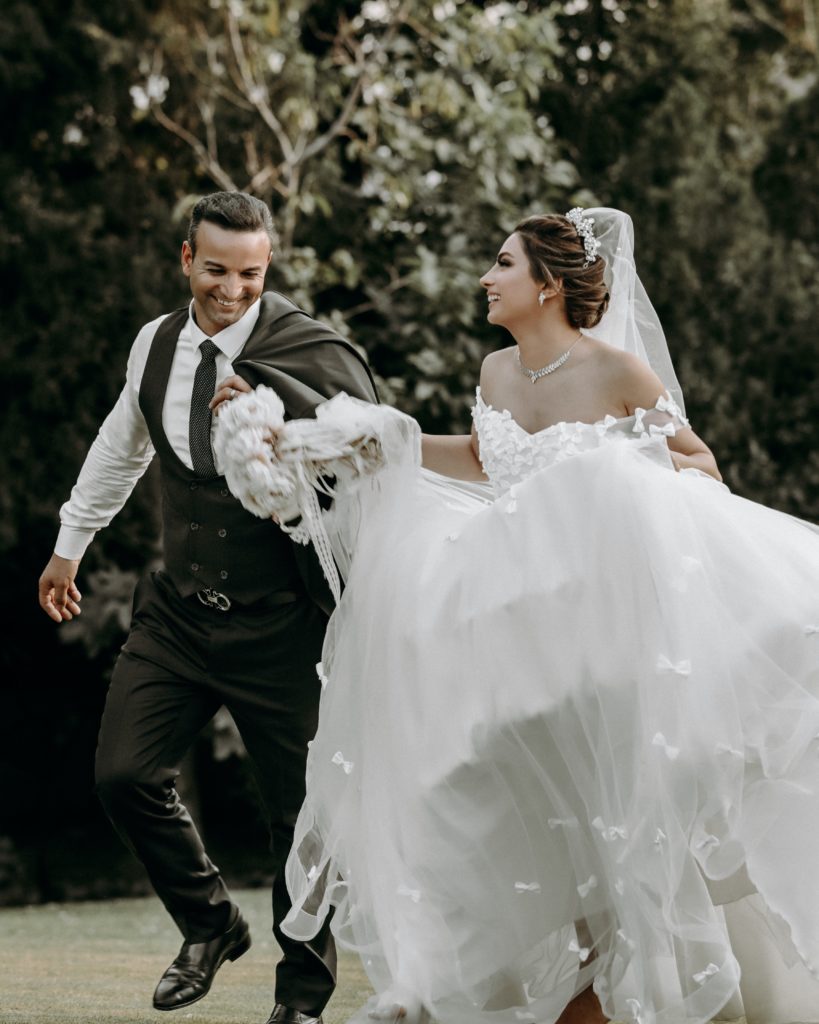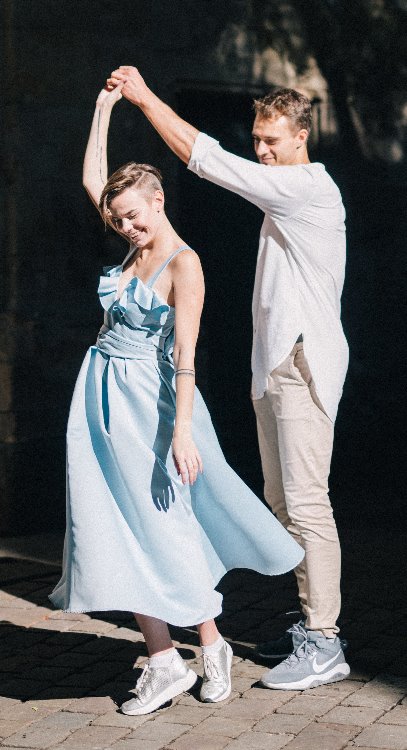
Foxtrot is a smooth slow dance that has a gentle lilt characterized by lovely gliding steps with a touch of suave movement to it. It can be danced to certain jazzy type songs, swing type songs, or some of the classic Frank Sinatra and Dean Martin songs, and many songs by Michael Buble’.
It moves counter clockwise around the room and is a popular dance that quickly fills the dance floor. Foxtrot is a smooth sophisticated dance in which dancers move in a counter clockwise direction around the floor. Foxtrot also has a gentle lilt or rise and fall. Picture Fred and Ginger as they glided effortlessly around a dance floor together.
Foxtrot is most often danced to big band music and swing music, but can be danced to many types of music. It is typically danced to music written in 4/4 time, with a tempo around 120 to 136 beats per minute.
The basic step in foxtrot is counted slow-slow-quick-quick (SSQQ). The more advanced foxtrot dance pattern is counted slow-quick-quick (SQQ).
Examples of Fox Trot music:
- Sinatra- The Way You Look Tonight
- Patti Page- I Can’t Get Started With You
- Sarah Vaugh- Summertime
- Bobby Darin- Fly Me To the Moon
- Dean Martin- Call Me Irresponsible
Foxtrot History
In 1914, Vaudeville actor Arthur Carringford, who went by the name Harry Fox, originated the dance Carringford, danced at the New York Theater. Once he was dancing to some rag time music and started trotting his dance steps, and the foxtrot was born. Onlookers thought the dance was one of the most original and exciting of its time and referred to it as “Fox’s Trot.” Over the years it evolved like many dances do to the various forms we see today!
Contact The Dancing Duo today about Foxtrot Lessons! Also check our calendar to see if this is currently being taught!





